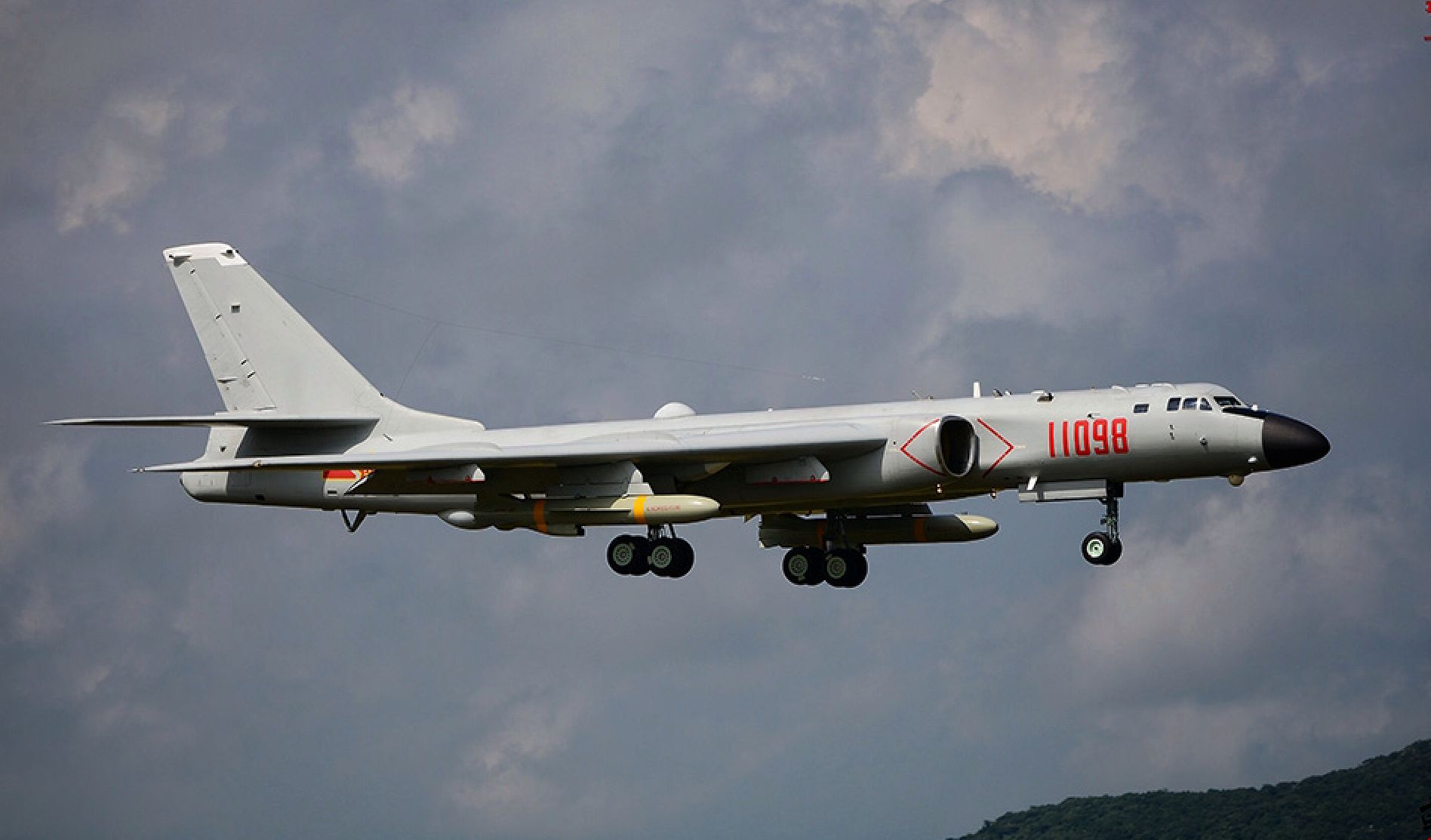Footage trending on social media shows a Chinese H-6K bomber firing an air-launched ballistic missile (ALBM), perhaps a KD-21 or YJ-21, in what could be called an unexpected first.
China’s H-6K bombers are an upgraded variant of the H-6. These bombers are considered vital to an assault on Taiwan, firing long-range missiles on multiple targets in coordination with naval and other aerial operations.
The footage showed a Chinese H-6 bomber launching one of its ‘mysterious’ ballistic missiles, which, according to popular belief, are ship-killing weapons.
The clip shows the missile being released from the pylon under the bomber’s port wing, as seen from the cockpit. The footage also features scenes of the H-6 crew getting ready for a mission with the subsequent launch of multiple bombers.
Although the details about the missile launch remain exiguous, the same missile was likely on public exhibition in November 2022 at the Airshow China in Zhuhai. The missiles seen then were loaded on the center pylons and were assessed to be hypersonic weapons by several experts.
H-6K firing a 2PZD-21 ALBM and other munitions 👀 pic.twitter.com/9di3Ymvnvo
— Húrin (@Hurin92) May 1, 2024
The weapon reportedly had the designation “2PZD-21” stenciled on the side. There have been speculations that the missile may go by the name KD-21 or YJ-21.
While a KD-21 is likely a land-attack variant, the YJ-21 could be an anti-ship missile. Chinese military analysts have largely pointed to the weapon having both capabilities, but this cannot be confirmed due to a lack of specific details from Beijing.
Song Zhongping, a Chinese military specialist and TV commentator, told the Global Times that it is probably capable of hitting both slowly moving objects like aircraft carriers and stationary targets.
杰哥很狗仔😄
Video of the H-6K carrying an air launched ballistic missile, arrives at the Zhuhai airshow
Possibly capable of targeting moving ships pic.twitter.com/SAUy0pYHTZ
— Zhao DaShuai 东北进修🇨🇳 (@zhao_dashuai) November 3, 2022
Moreover, when the weapon was unveiled in November, officials associated with China’s propaganda bureau said it was an anti-ship missile. Since the missile was showcased, it has been speculated to be an anti-ship weapon that can destroy expensive vessels like aircraft carriers.
What We Know So Far
A PLA watcher and military expert who did not wish to be quoted told EurAsian Times, “The new photo/video showing the missile being launched doesn’t change our understanding of anything relative to 2022 when it emerged at Zhuhai. We don’t know if it is a land attack only or if it is also capable of anti-shipping. Both are certainly possible.”
When asked if the missile could threaten the United States, the analyst said, “It’s just a new missile. Both sides are introducing a bunch of new fires all the time; it’s no big deal.”
The view was echoed by Philippines-based military analyst Miguel Miranda, who told EurAsian Times, “Air-launched ballistic missiles are once again in vogue after a few new types emerged in the late 2010s. But if we’re honest, air-launched ballistic missiles have been around since the 1950s, albeit in different roles from today. The PLAAF maintains a vast inventory of munitions and keeps growing.”
A ballistic missile has a greater range when launched from the air than from land. The aircraft could launch the ALBM from a point closer to the enemy’s territory or military facility, thereby increasing the missile’s efficacy at evading the adversary’s radars.
With the ability to reach a hypersonic terminal velocity, as is typical for ballistic missiles, an ALBM would probably plunge steeply toward its target. Its ability to maneuver dynamically during its terminal attack phase and attack moving warships should make it more difficult for ground-based air defenses to defeat.
These long-range missiles are valuable due to their extreme standoff trajectories. They can be useful against stationary targets such as a battleship with a large displacement or against static objectives on a fortified island.
Back in 2022, a Germany-based Chinese military aviation expert said the missile resembles the CM-401, a high-altitude ballistic anti-ship missile.

The observation was significant given that the CM-401 can be launched from multiple platforms and perform full-range hypersonic maneuvering. There was a widespread belief that the new ALBM may potentially be an air-launched variant of the CM-401 based on the similarities.
With a maximum diameter of roughly 2.8 feet, the CM-401 is comparable in size to the Russian ground-based Iskander ballistic missile, which has also been adapted for air launch as the Kinzhal aero-launched ballistic missile. Several analysts have likened the Chinese ALBM to Kinzal missiles.
The new missile does, however, have design modifications. Compared to the CM-401, the missile’s nose profile seems to have a greater finesse ratio—that is, it is sleeker and has a sharper point. This suggests that the guidance system has changed.
Regardless of whether the Chinese missile resembles the Kinzhal or not, the release of the H-6K video comes at a time when Russia is relentlessly using air-launched ballistic missiles to attack Ukrainian cities and causing considerable damage.
The latest development highlights Beijing’s significant efforts to enhance its air-launched anti-ship capacity to thwart the US Navy’s and its Supercarriers’ possible intervention in a conflict over Taiwan.
- Contact the author at sakshi.tiwari9555(at)gmail.com
- Follow EurAsian Times on Google News




